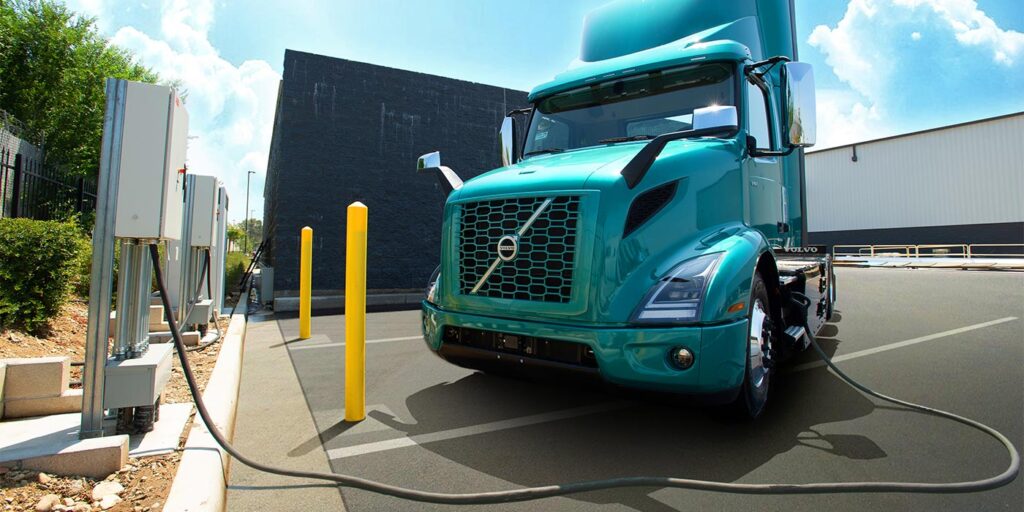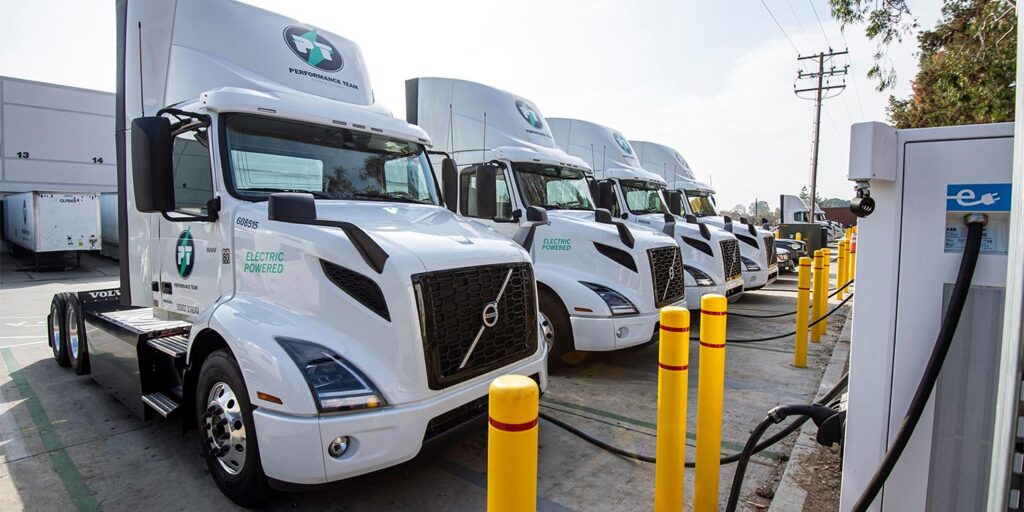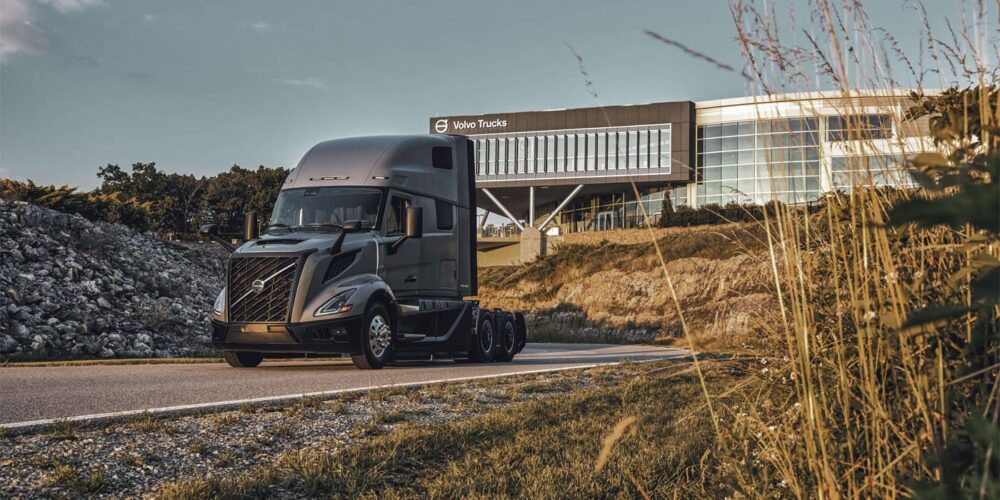There was a moment in talking with Peter Voorhoeve, president, Volvo Trucks North America, during its Volvo LIGHTS Project wrap-up event in August when the conversation turned from “here’s an example of how fleets can move toward electrification” to “fleets got this, and now they’re just running their business.” It was right … here:
Fleet Equipment (FE): Now that you’ve laid out this roadmap for electrification and how you’ve rolled this out here in California with the LIGHTS project, what’s the next step for taking it on a larger scale?
Voorhoeve: That’s already happening–the LIGHTS project did not teach us how to sell those trucks. Of course, it taught us a lot of things about what it takes to support electric trucks with a necessary electromobility ecosystem, but at the same time, the normal business of selling trucks was going on as well. We have customers that were not in the LIGHTS project that put in enormous VNR Electric orders.
What you see here with NFI and QCD is that all of them started with one or two or three trucks and then came back with much larger orders. Performance team came back with a 136-truck order. The fleets know what they can do and what they cannot do. They know where they can apply the electric trucks now.
FE: That’s true. I’m discounting the fleet responsibility and understanding of how they run their business so that they can get to the point where they’re just ordering trucks, and those trucks just happen to be electric.
Voorhoeve: Exactly. It’s business as usual for them.
Granted a huge majority of the trucking industry hasn’t even touched electrification at all, but in the two years since Volvo Trucks North America opened order boards for its VNR Electric trucks in the fall of 2020, early adopting fleets have evolved from electric trucks as a novelty to electric trucks delivering ROI. Perhaps the biggest takeaway from the LIGHTS project is that there’s light at the end of the electrification tunnel. (Pun clearly intended.) Well, that and–you have to start sometime; sooner is better.
FE: So what were your big takeaways from the LIGHTS Project?
Voorhoeve: My favorite lesson was that our strategy to come early to the market with a truck with a limited range was smart because if you want to reduce your CO2 emissions, you don’t necessarily have to look at the route between Chicago and LA. You want to look at the distribution in the ports in Los Angeles and in New York city, etcetera. That’s where emissions reductions actually worked. There are a lot of trucks working within that 150-mile range.

Another big lesson learned–and an increasingly important electrification talking point–was the importance of the relationship between the states, utility companies and fleets who wanted to electrify.
Voorhoeve: We have to have an environment in which it’s viable to sell an electric truck. California, in the Volvo LIGHTS Project, just happened to be a pioneer with the California Air Resources Board that requires organizations to meet and work together to achieve their goals.
What you see in the rest of the country is some other states doing that as well, but there’s legwork to be done still. The state of New York, for example, is different, but they have the same incentive program. But, the state of New York requires that you get a diesel truck out of the system in order to be eligible for the incentive program. You see the province of Quebec and now British Columbia is doing the same thing. More and more states are now coming with legislation, regulations and incentive programs.
As electrification in trucking evolves, so do the problems. There’s a spotlight that’s growing on state permitting and licensing challenges. Mobile charging solutions buzz is growing to address fleet needs right now to bridge the gap between electric truck delivery and lengthy charging infrastructure installations.
For Voorhoeve and Volvo Trucks, now that they’ve shared their lessons, compiled them in a handy guidebook and developed a Electromobility Total Cost of Ownership Tool, the OEM can turn its attention to even larger challenges like the well-to-wheel availability, sustainable fuels and growing its emissions-free lineup to meet its goal of offering a 100% fossil fuel free product line by 2040.
Voorhoeve: The Volvo LIGHTS Project has been running in parallel with the execution of our sustainability agenda–a 50% reduction of CO2 emissions by 2030. LIGHTS was instrumental in the acceleration of that, but it doesn’t stop here. I’m very happy with what we’ve learned from LIGHTS; we’ve also created an enormous amount of awareness. Now, we will continue selling and delivering the VNR Electric and developing our fossil-free offering.
It might be the end of the Volvo LIGHTS Project, but this is only the beginning of trucking’s decarbonization journey.














